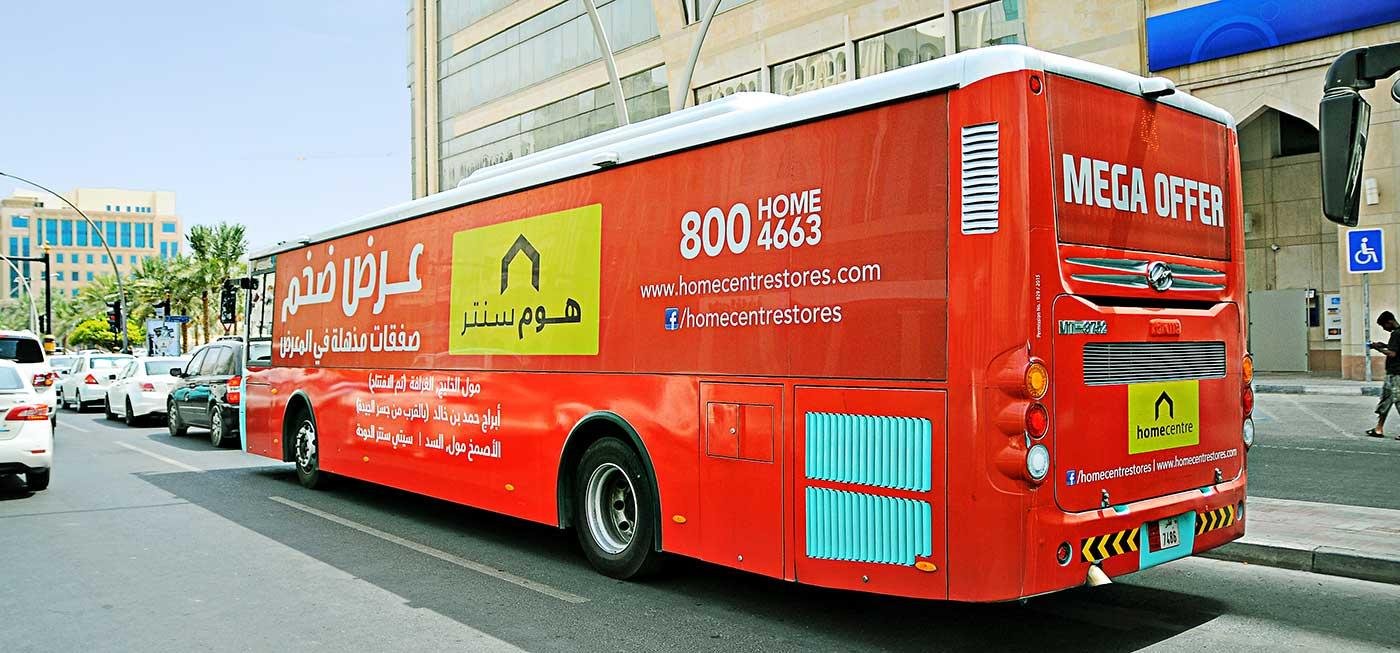Learn secrets from the best SEO company in Dubai. Discover how technical audits and content strategies can skyrocket your search rankings.
Reach Commuters On the Go: Transit Ads Now!

Summary:
Transit ads is one of the most potent ways of reaching a diverse audience. Transit advertisements can reach the target consumer in full view of the sky.
March 02, 2025
Did you know that an average city commuter spends more than two hours daily in transit? According to Statista, transit advertising is one of the surest ways to reach an assorted audience. Transit ads from Transit Media transform public spaces into potent brand platforms, including buses, trains, taxis, and metro stations.
With additional advertising options available through Transit Media, businesses can ensure their message reaches potential customers in places with high public circulation rates, making the visibility of their brands one of the most powerful marketing tools. So, how do transit media ads enable a connection between the masses and brands? We will explore how businesses can use transit advertising for great success.
Transit Advertising Connects the Brand with the Common People
Visibility With Repeat Exposure
Transit advertising cannot be ignored. Irrespective of whether it is on location in a bus, metro station, or a digital taxi screen, these ads tap into the engagements of commuters wherever they go. Unlike digital pop-ups that can simply be skipped, with ordinary street advertising, there is continuous traveling exposure on transit daily. Repeated reinforcement creates a solid memory of a brand, thereby increasing consumer mentality - conscious of the brand and likely to consider it trustworthy.
Diversity in Audience Reach
Public transport is a melting pot of people, including students, workers, tourists, and professionals. Transit media ads allow businesses to connect with this great demographic, assuring that different age groups, economic classes, and lifestyles see their brands. This breadth of include-ability makes transit advertising one of the most versatile and wide-reaching marketing channels you can find.
Localized Targeting for Highest Impact
Business customers can then place transit ads increasingly where the audience they seek is concentrated. For instance, a brand targeting a university campus student could shoot their ads out around metro stations and bus routes taken by students. When businesses utilize such hyper-localized targeting, the ROI goes right through the roof as you ensure to engage your prospective consumers when they are in an area close enough.
Cost-Effective Name Recognition
Transit media ads are an inexpensive option for creating brand recognition compared to digital, television, or print advertisements. They are highly effective in branding because they provide long-term exposure, allowing the brand to be viewed continuously, given that money continues to be reinvested. Because transit advertising is available where most road traffic lies, business reach is considerable at a small fraction of the cost.
Building Trust and Recognition by Customers
Seeing an ad while riding allows for greater customer trust and brand recognition. The more they see it, the more the consumers associate with the brand with credibility and reliability. Transit ads create the perception that a brand is firmly recognized and established; hence, customers become all the more willing to engage and trust the brand when a need arises for related products and/or services.
Mobility Spells Wider Reach
Transit ads roll through urban landscapes and are dynamic and inexpensive, unlike static billboards. One bus ad would reach thousands of people in various neighborhoods daily. This ensures that a brand or ad is not tied to one location only, opening avenues for a larger and more comprehensive scope of clientele.
Creative and Eye-Catchy Designs
Given an artistic direction, transit media ads can hit hard. Photographs of high resolution, vivid colors, and engaging messages can sustain attention even in busy urban environments. Whether it is a funny tagline, a clever graphic, or a timely call-to-action, creative transit ads have a flair for sunlight in making a brand memorable.
Non-Intrusive Advertising
Transit ads are neither internet ads that disrupt browsing nor TV commercials that mark programming breaks; rather, they slot themselves perfectly into the daily stations of regular commuters. By that, passersby become immersed in the message without feeling overwhelmed. The inherent non-intrusiveness of Transit Media ads makes them more likable and engaging and enhances the probability of audiences favorably responding to the brand message.
Tips for Successful Transit Advertising
1. Understand the Target Demographic
Gaining insight into audiences' behaviors, including the routes they travel and the hours they use Transit, becomes vital in advising the best placement of the transit media ads. Once the peak fill-in hours and the popular destinations to board are considered, this leads to an effective exhibition of ads, as such usefulness entails better visibility and targeting precision.
2. Determine the Correct Transit Format
Transit ads can vary widely, including, but not limited to, full bus wraps, interior metro posters, digital taxi screens, and tram advertising. Once a format is established based on one's audience demographics and campaign objectives, it will ensure messages resonate effectively with commuters, consequently giving them the highest possibility of engagement.
3. Aim for Readability and Visual Impact
Transit media ads must be visually exciting since commuters rarely have additional time to fathom the advertising messages. Great typography with high-contrast colors adds genuine interest in attaining success. A strong image and a few words that express the purposes of the call to action will help develop great retention, leading to brand recall long after the journey is over.
4. Leverage Digital Transit Ads
Digital transit displays allow businesses to animate their ads, use videos, or allow for greater interactions with passing commuters. This means they have more pull when it comes to minds that'll quickly glance in the ads' direction than static images of years gone by. With more real-time updates, businesses can also change their ads based on audience feedback or other ongoing promotions, thereby maximizing engagement with their audience.
5. Use Location-Specific Messaging
When you add location references in your ads, they feel a little timely to commuters, which increases relativity. Using authentic city landmarks, local phrases, or regional offerings draws even higher emotional significance. Transit ads that articulate the daily lives of their audiences can help build their connection and drive the message home.
6. Keep It Simple and Memorable
Because transit ads are limited in the amount of time an audience takes in an advertisement, simplicity is key. A simple direct message, readable at a glance, together with an attention-grabbing visual, can make a good connection without the customer even thinking about it. Remember that a catchy slogan or strong image will linger in their minds long after the commuter has noticed the ad.
7. Integrate with Online Campaigns
Complement transit media ads with digital marketing efforts to magnify their impact. QR codes, social media hashtags, or app promotions entice commuters to engage with brands on the web. This technique bridges offline and online marketing, creating a unified and consistent brand experience.
8. Measure and Optimize Performance
Attribution of performance is important so that there is room for improvement. Unique URLs, customer surveys, or digital interactions from QR codes track response rates. Commuter engagement data allows companies to adapt their transit ads strategy and tweak future campaigns for enhanced performance.
Case Studies of Transit Advertising Triumph in Dubai
1. The Dubai Metro’s Campaign for Expo 2020
Expo 2020 used Transit media ads extensively at metro stations, inside trains, and on digital screens in Dubai. This campaign reached millions of commuters daily, building excitement and attendance at the global event. It was the cost organized into a very meaningful visual space, and the first of its kind, that directed the publicity for and proved the efficacy of transit advertising.
2. Taxi Ads Strategy of Careem
Careem, the premier ride-hailing service in Dubai, used taxi transit ads to enhance its brand visibility. With a clear and visible campaign displaying offers, QR codes on digital screens within the cabs allow for real-time customer engagement. This contributed to growth in app downloads and increased bookings and exemplified just how effective transit media advertising ads can motivate direct customer action.
Conclusion
Transit ads provide unrivalled visibility, engaging brands with daily commuters through noninvasive, engaging and cost-effective means. From metro station billboards to bus wraps to taxi screens, Transit media ads provide a dynamic way to grow brand awareness and propel customer engagement. Following the tenets of audience research, creative execution, and performance tracking in advertising can help businesses optimize the success of their transit advertising campaigns.
Contact us today for professional digital advertising services in Dubai, UAE. Share this blog on LinkedIn, Facebook or Twitter, and let's develop a transit advertising strategy that works for your brand!
Related Articles

Success Tips from the Best SEO Company in Dubai
Published On - December 14, 2025

Compare the Best SEO Companies in Dubai for 2026
Published On - December 14, 2025
Looking for the best SEO companies in Dubai? We compare top agencies to help you find the right fit for your industry and business goals.

Local SEO Dubai: How Businesses Can Attract Nearby Customers
Published On - December 14, 2025
Discover how Local SEO Dubai helps businesses attract nearby customers, rank on Google Maps, and boost calls, visits, and sales.



